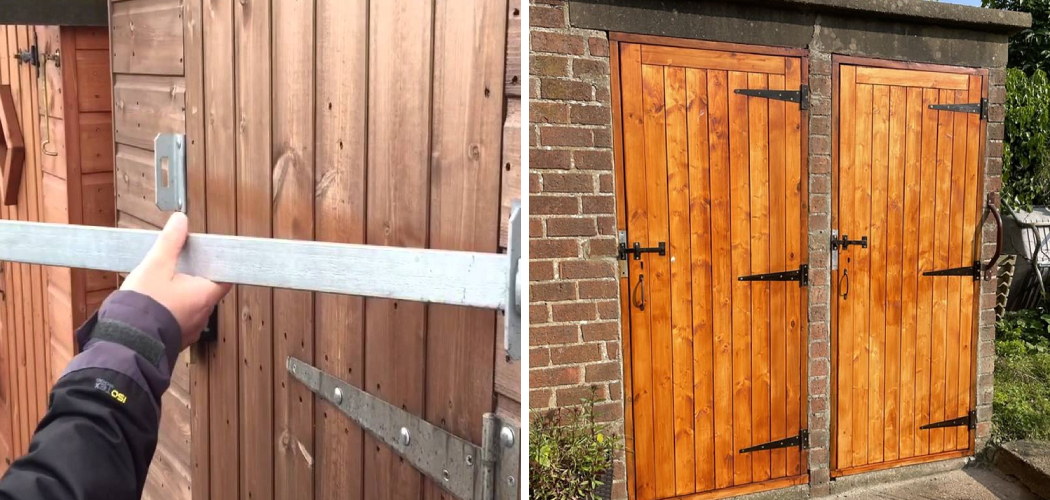When it comes to protecting your valuable possessions, knowing how to secure a shed door is crucial. Whether you store gardening equipment, tools, or other essential items in your shed, implementing effective security measures can safeguard against theft and damage. In this guide, we will explore comprehensive strategies to reinforce your shed door, add anti-theft devices, and enhance the overall perimeter security. By following these steps, you can ensure that your shed remains a safe and secure storage space.
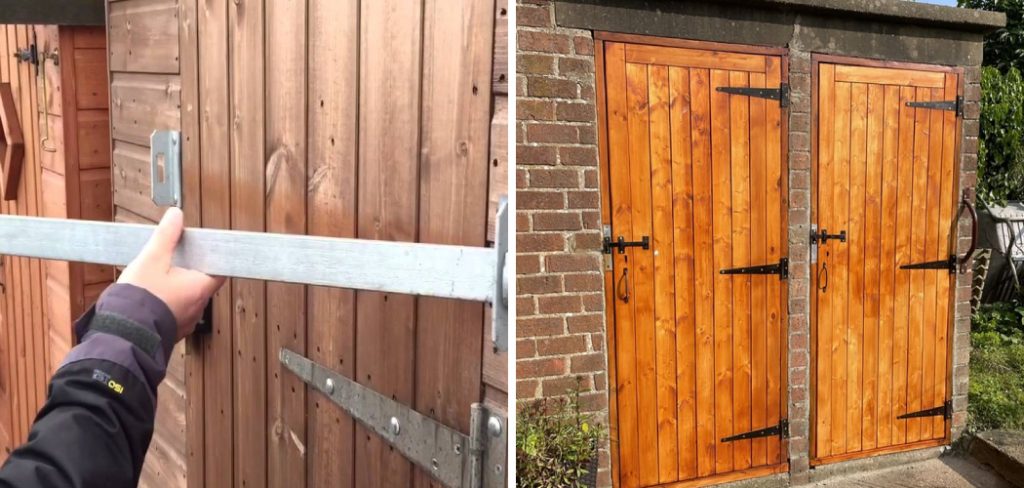
Understanding Shed Door Vulnerabilities
Shed doors often become targets for theft and vandalism due to their common weaknesses. Many sheds are built with flimsy materials and basic locks, which provide minimal resistance to intruders. Wooden sheds, for instance, might have doors made of thin panels that can be easily kicked or pried open, while plastic sheds may have doors that can be bent or warped. Even metal sheds, though more robust, can still have vulnerable points where the locks and hinges are installed.
Different types of shed doors—single, double, and sliding—each come with their own set of vulnerabilities. Single doors might suffer from weak frames and inadequate locking mechanisms. Double doors, while providing more space for access, often have a central meeting point that can be a weak spot if not properly secured with reinforced bars or multiple locks. Sliding doors, though convenient, can be jimmied off their tracks if not equipped with sturdy locks and anti-lift devices.
An unsecured shed risks the items stored inside and the overall security of your property. Vulnerabilities in your shed door can allow thieves to explore and exploit other areas of your property, making it essential to address these weaknesses comprehensively.
Tools and Materials Needed
To secure your shed door effectively, you will need various tools and materials. Essential tools include a screwdriver, a drill, a measuring tape, a level, and a wrench. These tools are crucial for installing and reinforcing security features accurately and securely.
Regarding materials, it’s important to invest in high-quality locks, such as deadbolts and mortise locks, which offer maximum security. Additionally, you’ll need hasps and padlocks to further bolster locking mechanisms. Security bars and hinge bolts are also essential for adding physical strength to the door structure.
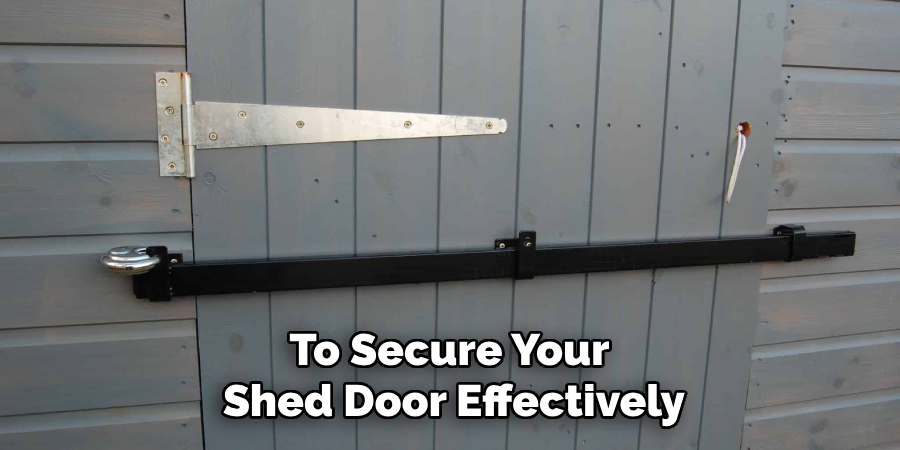
Optional materials for enhanced security include security cameras, motion sensor lights, and alarm systems. These items provide an extra layer of protection by deterring potential intruders and alerting you to any suspicious activity around your shed.
How to Secure a Shed Door: Reinforcing the Door Structure
Securing a shed door begins with a thorough inspection to identify any weak spots, particularly in the door frame and hinges. These areas are often the first targets for intruders attempting to force entry. Carefully examine the integrity of the wood or metal, checking for signs of wear, rot, or fatigue that could compromise the door’s strength. Additionally, inspect the hinges for rust or loose screws, as these can create vulnerabilities.
To strengthen the door, consider adding metal strips or reinforcing plates. These can be affixed along the edges and around the lock area to provide additional resistance against prying and kicking. Reinforcing plates are especially useful for the door frame, ensuring the lock is anchored securely.
If the door itself is weak or flimsy, replacing it with a sturdier material is advisable. Opt for a thick, solid wood door or a reinforced metal one, as these materials are much more resilient to break-in attempts. Upgrading the door not only enhances security but also contributes to your shed’s overall durability and longevity. Addressing these structural aspects can significantly improve the shed’s defense against unauthorized entry, making it a less attractive target for potential intruders.
How to Secure a Shed Door: Upgrading the Locking Mechanisms
Choosing and installing high-quality locks is crucial in securing your shed door. Begin by selecting a sturdy deadbolt or mortise lock, as these types provide maximum security due to their robust construction and resistance to tampering. Deadbolt locks extend deeper into the door frame, making them less susceptible to forced entry. In contrast, mortise locks offer the benefit of a built-in locking mechanism that integrates seamlessly into the door’s structure.
In addition to a deadbolt or mortise lock, consider installing a heavy-duty hasp and padlock combination. This added layer of security deters would-be intruders by presenting multiple barriers to break through. Ensure you choose a padlock designed for outdoor use and featuring weather-resistant materials to withstand the elements without compromising its integrity.
When installing any locking mechanism, proper alignment and secure installation are essential. Use long, hardened screws to fasten locks and hasps, ensuring they penetrate deep into the door and frame for added strength. Misaligned locks or short screws can create weak points that intruders can exploit.
For enhanced security, it is advisable to use multiple locks on double doors. Install a deadbolt at both the top and bottom, ensuring that both doors are tightly secured. Additionally, placing a sturdy hasp and padlock in the middle can reinforce the central meeting point, a common vulnerability in double-door setups.
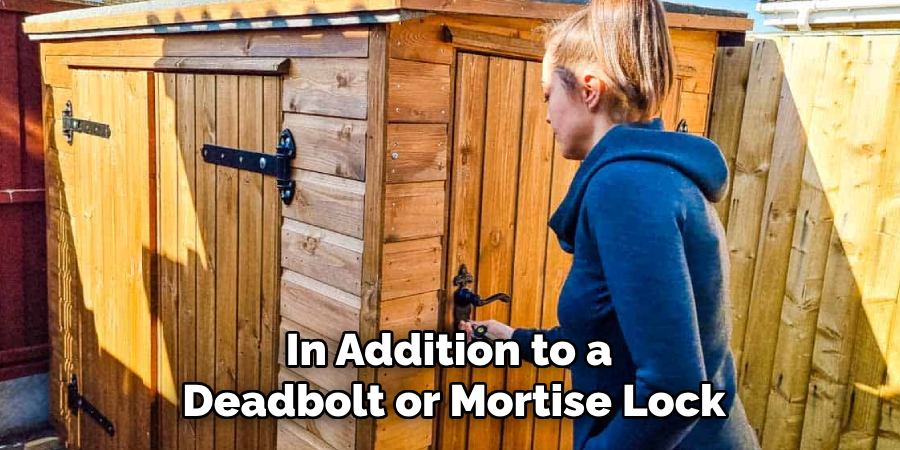
By upgrading your shed’s locking mechanisms with high-quality components and ensuring they are properly installed, you can significantly enhance its overall security, providing peace of mind and better protecting your valuable tools and equipment.
Installing Security Bars or Crossbars
Adding security bars or crossbars to your shed door effectively bolsters its resistance against break-ins. Measure the width and height of your door to determine the appropriate size and placement of the bars. Installing them in a way that evenly distributes the force across the door is crucial, making it significantly harder for intruders to gain entry.
Choose security bars or crossbars that are designed to be easily removable from the inside but secure from the outside. This ensures you can quickly access your shed when needed while providing a robust barrier against unauthorized entry. Look for bars made from high-quality, durable materials such as steel, which offer superior strength and longevity.
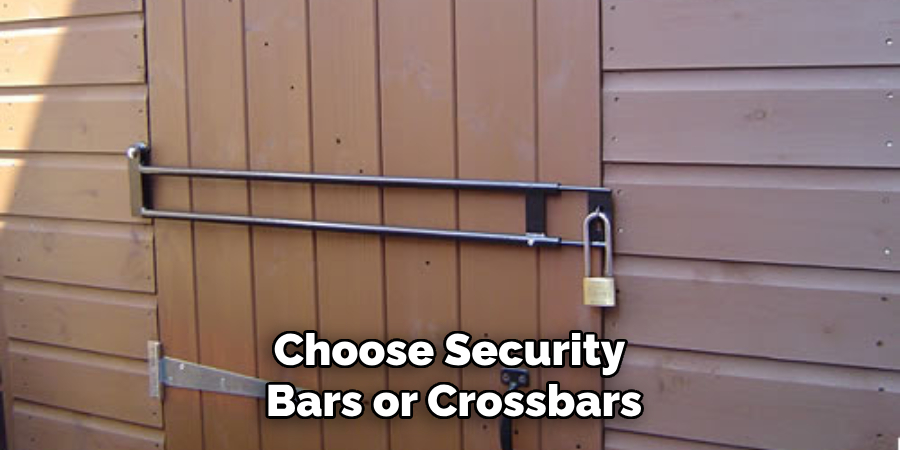
Install the bars at strategic points, such as across the middle of the door and near the top and bottom. This placement prevents the door from being forced open by distributing resistance across multiple points. Use long, heavy-duty screws and anchor them deeply into the door frame to ensure a solid and secure installation. Adding metal brackets or plates where the bars attach can further reinforce these critical areas.
By strategically placing security bars or crossbars, you create a fortified barrier that significantly enhances the overall security of your shed. This deters potential intruders and safeguards your valuable possessions.
Adding Hinge Bolts and Anti-Pry Devices
Installing hinge bolts is fundamental in preventing shed doors from being lifted off their hinges during a break-in attempt. Hinge bolts are small but robust metallic pins that can be easily installed into the door and frame, aligning when the door is closed to create a secure interlock. Begin by drilling holes in both the door and the frame at the level of the hinges, then fit the hinge bolts in place. When the door is shut, the pins will slide into the frame, preventing the door from being lifted even if the hinge pins are removed.
In addition to hinge bolts, incorporating anti-pry devices into the door frame is crucial for deterring forced entry attempts. Anti-pry devices are essentially metal plates or bars that reinforce the edges of the door and frame, making it exceedingly difficult for intruders to insert a crowbar or similar tool and pry open the door. Install these devices by securing them with long, hardened screws, ensuring they are flush with the door and frame, thus eliminating any gaps that could be exploited.
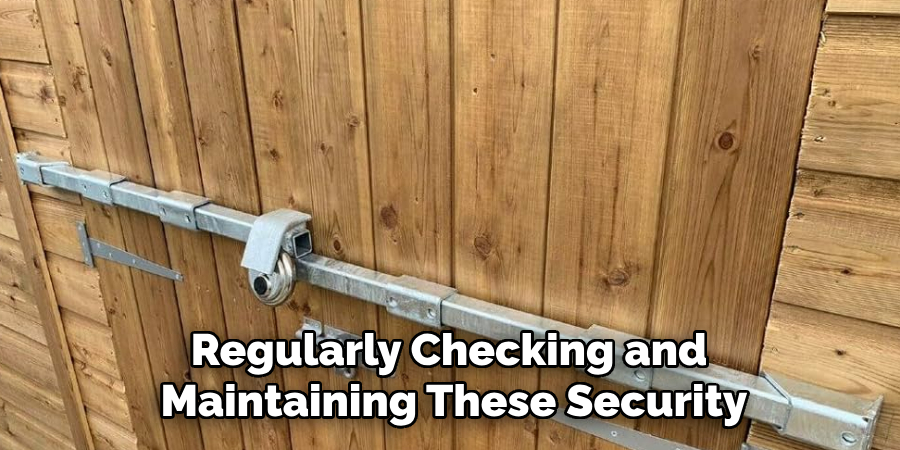
Regularly checking and maintaining these security enhancements is essential to ensure they remain effective. Inspect hinge bolts and anti-pry devices periodically for signs of wear, rust, or damage, and tighten any loose screws. Keeping these devices in optimal condition guarantees a robust defense against unauthorized entry, ensuring your shed remains a secure storage space.
Enhancing Perimeter Security
Securing the perimeter of your shed is a proactive measure that can effectively deter potential intruders before they even reach the door. One highly effective method is to install motion sensor lights around the shed. These lights automatically illuminate when movement is detected, startling intruders and making it difficult for them to approach unnoticed. Place the motion sensor lights at key points, such as near entrances, windows, and dark corners, to maximize coverage and visibility.
In addition to lighting, consider using gravel or other noisy ground covers around the shed. The crunching sound produced when someone walks on gravel acts as an audible alert, drawing attention to any unauthorized presence. This simple but effective tactic can warn you early, providing crucial time to respond to potential threats.
Adding security cameras or alarm systems can further enhance your shed’s perimeter security. Modern security cameras offer real-time monitoring and can be connected to your smartphone, allowing you to watch your shed even when you are not around. Pairing cameras with an alarm system can enhance protection, as alarms can be configured to trigger a loud noise or send alerts to your device if suspicious activity is detected.
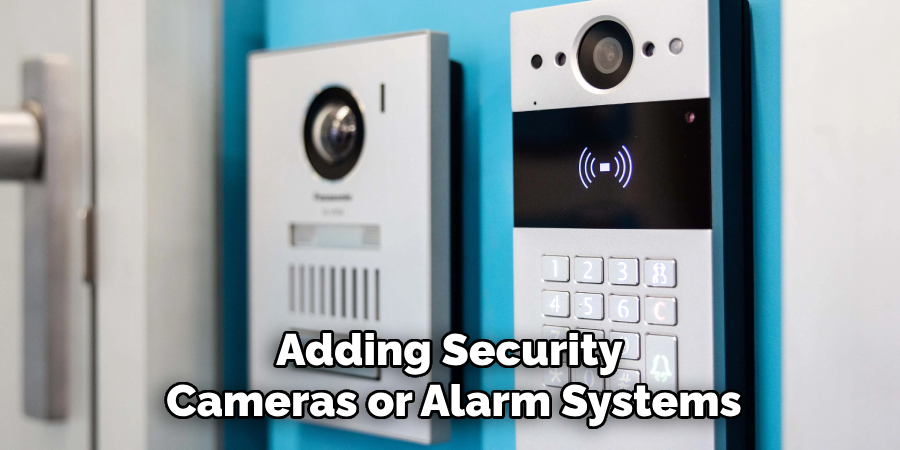
By combining motion sensor lights, noisy ground cover, and advanced surveillance systems, you create a multi-layered perimeter defense that significantly enhances the security of your shed and safeguards your valuable possessions.
Regular Maintenance and Inspections
Conducting regular checks of all locks, bolts, and reinforcement devices is essential to maintaining the security of your shed. Make it a routine to inspect the integrity of these components at least once a month. During these inspections, ensure that all locking mechanisms are functioning smoothly and that bolts and screws are tightly secured. Pay special attention to any signs of wear, rust, or damage that could compromise the effectiveness of your security measures.
Additionally, assessment of the door and frame condition is paramount. Look for cracks, warping, or other structural issues that may have developed over time and promptly address them with necessary repairs. Regularly updating your security measures is also crucial as new threats and techniques used by intruders evolve. Stay informed about the latest advancements in security technology and consider upgrading your existing setup to incorporate these innovations, ensuring continued protection for your valuable possessions.
Conclusion
In summary, understanding how to secure a shed door involves a multifaceted approach that includes reinforcing the door with security bars or crossbars, installing hinge bolts and anti-pry devices, and enhancing perimeter security with motion sensor lights, noisy ground cover, and surveillance systems. Conducting regular maintenance and inspections further ensures that all security measures remain effective over time. By implementing these strategies, you can significantly enhance the protection of your shed, safeguarding your valuable possessions from potential intruders.

